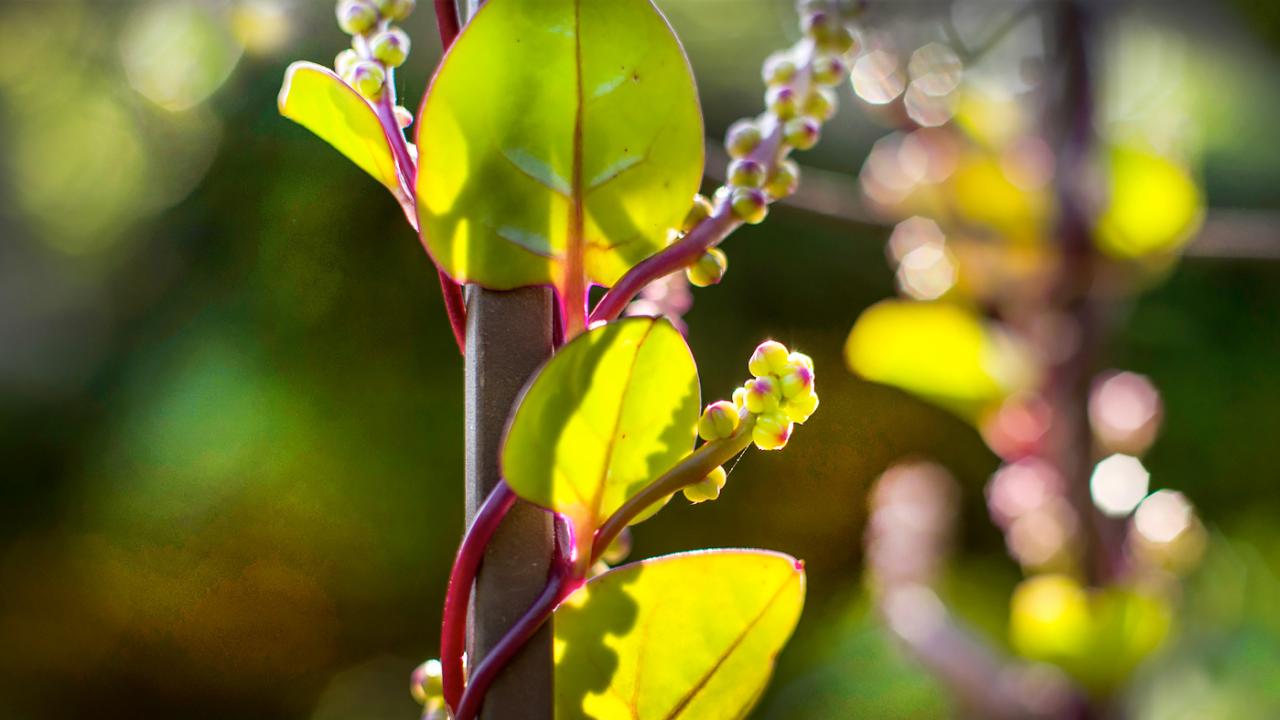

Plants &
Gardening
Garden Stories
Roll Out the Green Carpet: A Star Is Born in the Greenhouse
What is old is new again.
The dinosaur of the plant kingdom, a Wollemia pine tree (Wollemia nobilis), surprised horticulturists at the Chicago Botanic Garden with a burst of promising male and female cones in 2017.
In Glencoe, the sole tree spends its winters in the carefully controlled environment of the production greenhouse. In the wild, its relatives are clinging to life on remote sandstone gorges in the Blue Mountains of Australia.
“It is probably the most watched plant in the Garden right now,” said Boyce Tankersley, director of living plant documentation. Little is known about the prehistoric species that is part of a genus dating back 65 million years. The Garden’s specimen is a youthful 8 years old, and is just beginning to show off its unusual characteristics.
“In this case, there is such little information in the literature,” noted Tankersley, who was amazed to see both male and female cones emerging from the tree’s branches earlier this year. “We don’t know enough about this plant to know if it is going to set seed…but at least it is producing cones, which will allow us to try some experiments,” he said. The tree has grown male cones in recent years, but this is the first year it has produced any female cones.

Wollemia nobilis female cone

Wollemia nobilis male cone
Scientists do know that the species that has managed to survive the test of time possesses some unusual adaptations. It can generate new seedlings by dropping specific branches that take root, or it can exchange pollen from male to female cones to generate seed.
At the Garden, scientists plan to pollinate the tree when the time is right. They will use pollen from the tree itself, and if available, pollen from a tree at another botanic garden. They will also reserve pollen for a potential future exchange.

Find Wollemia nobilis in the Heritage Garden in the summer months.
Trees in the wild population are believed to be closely related to one another. As a result, any seeds they produce have a low level of viability. Only six percent or fewer go on to become healthy, mature trees. The species is listed as critically endangered. The urgency to save the pines is accelerated by changes in climate. Their mountain home is experiencing increasingly hotter and drier weather than ever before.
According to Tankersley, there is hope that more diversity may be found within the propagated plants, and that their offspring could lead to a stronger future for the species. However, scientists are only mildly optimistic. “In a world where there is so much that we can’t do anything about, it’s good to have something where you can participate in efforts to keep something from going extinct,” he said. “This plant is not gone; there’s something we might be able to do to help it out.” In addition, the plant may inform the research of paleobotanists who rarely have the opportunity to see a live plant with such historic roots to compare against the fossil record. “In a scientific way, we’ve been looking at the earth in a relatively short period of time,” added Tankersley. “When we find something like this that is very uncommon, everything about it is unknown…it’s sort of a miniature warehouse that we don’t want to lose because in the future, it may be more important than a mere botanical curiosity.”
The horticultural team also takes the cone production as validation that they are meeting the plant’s very particular growing requirements.
The Garden’s Wollemia pine spends its summers in the Australia bed of the Heritage Garden.
As for the voyage of discovery with this extraordinary plant, he says, it is to be continued…

